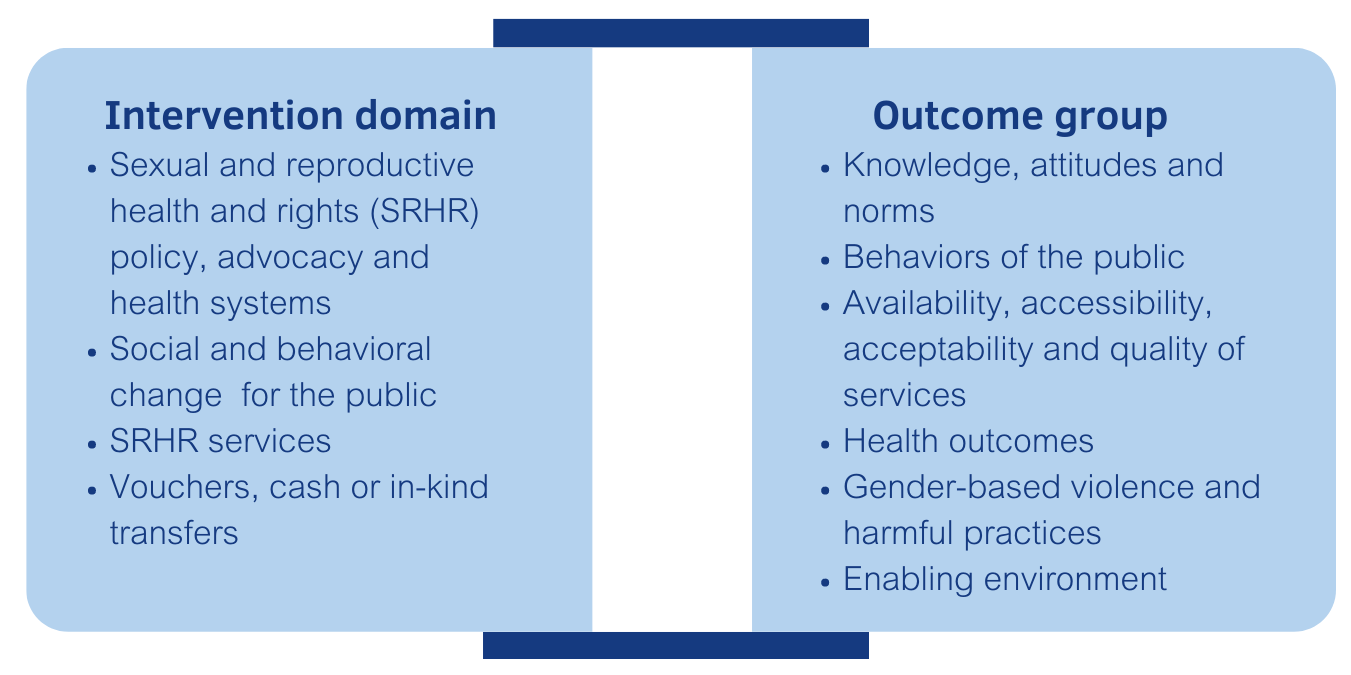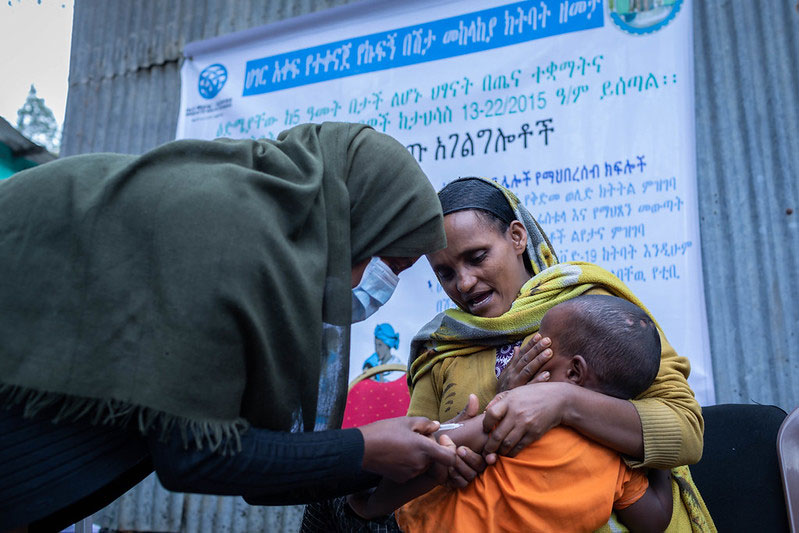Sexual and reproductive rights are human rights, and the right to make sexual and reproductive decisions affects sexual and reproductive health. In low- and middle-income countries (L&MICs), where it has been reported that 94% of maternal deaths during pregnancy or childbirth occur from preventable causes, sexual and reproductive health and rights (SRHR) services are particularly critical. Globally, as many as 4.3 billion people are expected to face inadequate access to SRHR services during their lifetimes and only 57% of women report having autonomy over SRHR-related decisions, including whether to refuse sex, make personal healthcare decisions or use contraception. To understand the extent of the evidence on SRHR and inform decision-making, 3ie is developing an evidence gap map (EGM). The German Institute for Development Evaluation (DEval) commissioned the map to explore the state of the evidence base on SRHR and to inform upcoming impact evaluations.
Scope of our project
This EGM will compile rigorous effectiveness evidence that evaluates SRHR interventions in L&MICs. While consensus about how to define SRHR has evolved over time, our EGM will focus on key dimensions of SRHR such as:
- Family planning, such as the provision of information, counseling and means of contraception
- Maternal and newborn care; such as counseling and services to prevent complications during pregnancy and following childbirth
- Sexual health and well-being such as counselling and STI prevention
- The right to access services and make sexual and reproductive decisions
- Other essential programs or services, including comprehensive sexuality education, and those related to safe abortion and care; sexual and gender-based violence; reproductive cancers; and infertility
EGMs are a visual representation of relevant impact evaluations and systematic reviews in the form of an interactive online matrix. We will only include rigorous experimental or quasi-experimental quantitative impact evaluations, qualitative evaluations that aim to address causal questions or systematic reviews of effectiveness. Pre-analysis plans and ongoing evaluations will also be included.
EGMs are structured by the types of interventions evaluated and the outcomes measured in the studies. The SRHR EGM will focus on evidence relating to four intervention domains that may influence outcomes in six groups (see Figure 1).
Figure 1 Intervention domains and outcome groups relating to SRHR
Need to map the evidence and gaps
By identifying and describing the available evidence, the EGM will facilitate access to evidence on the effects of SRHR interventions on selected SRHR-related outcomes in L&MICs for decision-makers, researchers, and the development community. It will fill a gap in the current evidence base on this important topic by providing a more comprehensive body of evidence that considers a broad range of SRHR interventions across multiple populations.
Previous efforts to map the SRHR evidence for people in L&MICs have focused on interventions for particular SRHR topics or population groups. Focus areas of the previous maps include, among others: prevention of intimate partner violence; social and behavior change communication related to reproductive, maternal, newborn and child health; adolescent sexual and reproductive health; and mapping of systematic reviews of SRHR interventions in Sub-Saharan Africa.
Call for additional studies
While we have already identified many studies for the SRHR EGM, you can help us make a more comprehensive map by suggesting relevant research. You can share the following three types of published and unpublished studies:
- Systematic reviews evaluating the effectiveness of SRHR interventions.
- Impact evaluations, including one of the following designs: randomized evaluations, regression discontinuity, difference-in-differences, fixed-effects models, interrupted time series, matching, synthetic controls, and instrumental variables.
- Qualitative studies that seek to answer a causal inference question related to attribution or contribution and apply a methodology to examine the causal relationship between an intervention and outcome. We will not include qualitative studies that do not focus on effectiveness, such as those describing experiences, context, theory development and so on.
Studies can be in any language but must have a publication date after 2013. If you know of a study focusing on any aspect of sexual and reproductive health and rights and using any of these designs – particularly if it’s unpublished – please share it with us and help us extend the coverage of the EGM. You can comment below or send your study suggestions to Lina Khan (lkhan@3ieimpact.org). We will be accepting suggestions until 28 July 2023.






